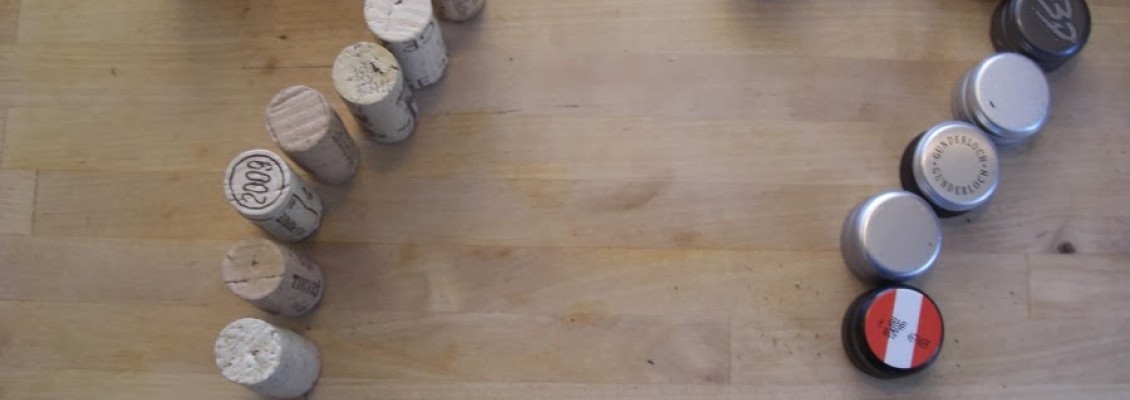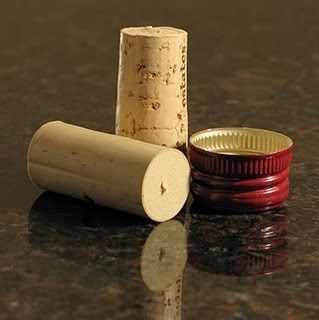Stelvin cap or natural cork?

George Skouras explains the reasons that led him to the use of stelvin caps to his wines.
One of the biggest anxieties a winemaker has towards his clients, is about the product reaching the final consumer's hands as it was produced. The reason is simple: If a bottle arrives in our hands not as it was supposed to be, if or example is oxidised, or remains under warm conditions over a log period, then it's easy to think that the producer is not capable or that we don't like the wine and it's less possible to understand that we are facing a flawed bottle. Of course we are talking about the majority of wine buyers and not for connoisseurs who through years of experience understand the problem's nature.
All of the above are in the heart of what we call Monitoring & Quality Assurance, an area in which wine producers spend substantial amounts of money. So it's almost oxymoron to wastefully use natural corks for capping our bottles, since we know that cork has high rates of failure. By failure we group a lot of problems that can occur, from sealing problems that lead to sporadic oxidations or entrainment, to cases where the cork affects the aromatic properties of a wine, whether we are talking about the famous “felloma”, fresh wood scents, or others.
The failure percentage' s size is a matter of investigation. There are studies talking about an 8% i.e. a bottle in each box(!) while the most optimistic study speaks of a 0.16%. As small as the second percentage seems, lets calculate the following: a winery that produces 1.000.000 bottles a year, will “give” 1600 defective or at least, “not right” bottles. These in return will disappoint or bother let's say about 4.000 to 5.000 thousand people. So without knowing it and without it being a primary responsibility, we do ourselves a big and negative campaign.
The fact tat the natural cork has problems is beyond debate. Companies that make them have also accepted it, which over the past few years have intensively dealt with providing the wine producers with a more reliable product. Something they have achieved. The first significant move towards alternative ways in bottle sealing was done in the 90's with the use of synthetic corks. Soon however, even the most ardent supporters realized that synthetic corks also had problems since after 12 to 18 months, they would lose their tightness and would give oxidized wines.
 For almost a fifteen years, groups of wine producers from Clare Valley in Australia and New Zealand, decided to look for the “perfect wine cap” in threaded metal clasps and specifically in th Stelvin model, that is produces by the Pechiney Company. From the early stages, the results were excellent: the wine opened easily and without the use of tire-bouchon, there were no cork problems, while the wines preserved their freshness longer. Also, the wine' s character would change from bottle to bottle. What we call “bottle variation” is known for centuries amongst wine lovers, who claim that “there are no big wines but big bottles”. We believe that, if a wine bottle of a particular vintage is excellent, then the wine producer should make sure that EVERY single bottle of that wine MUST be the same, otherwise we don't respect the consumer. So, the Skoura Estate was the first winery in Greece that in the beginning of 2002 began to bottle wines using stelvin. A start was made with the Dum Vinum Sperum, after 2 years the Viognier Eclectique followed, and then other wines as well.
For almost a fifteen years, groups of wine producers from Clare Valley in Australia and New Zealand, decided to look for the “perfect wine cap” in threaded metal clasps and specifically in th Stelvin model, that is produces by the Pechiney Company. From the early stages, the results were excellent: the wine opened easily and without the use of tire-bouchon, there were no cork problems, while the wines preserved their freshness longer. Also, the wine' s character would change from bottle to bottle. What we call “bottle variation” is known for centuries amongst wine lovers, who claim that “there are no big wines but big bottles”. We believe that, if a wine bottle of a particular vintage is excellent, then the wine producer should make sure that EVERY single bottle of that wine MUST be the same, otherwise we don't respect the consumer. So, the Skoura Estate was the first winery in Greece that in the beginning of 2002 began to bottle wines using stelvin. A start was made with the Dum Vinum Sperum, after 2 years the Viognier Eclectique followed, and then other wines as well.
Many people don't know stelvin very well and they react negatively towards it. The first “argument” is whether the wine that is capped with stelvin, can age “correctly, inlike the cork that breathes”.I would like to say a few words regarding this. Initially, aging process is something that concerns a minimum percentage of wines produced in the world. Since studies show that over 98% of wines in the world, are consumed within the first week from the moment the final consumer buys the bottle. So, that even if we assume that “aging and cork” is the only choice, is something that little has to do with the wines. It would be naive to say that since there are 200 Chateaux in Bordeaux that make wines for ageing, then the rest 11.800 of the region's Chateaus must suffer the cork problems, which must be consumed either way within the first two years of their lives.
The second point is that there is no certainty that the cork' s breath and, therefore the oxygen' s presence in the bottle, help in the wine' s ageing. There are studies that show towards the one direction, and others that confirm the opposite. It is certain that this will only concern red wines, because we have many proofs for the amazing ability of ageing white wines under Stelvin. Dum Vinum Sperum is so fresh and complex at the moment, that I am really sorry we haven't kept more bottles in the Estate Skoura's “Bottle Museum”. If this wine had been under cork, it would almost certainly, much more sophisticated. We have also tried many times australian Riesling from the 70 's and the 80 's, that give us hope for even greater ageing processes. It's worth saying that all of the above are facts only for the Stelvin caps and especially for their second generation, the Stelvin Redraw. Other threaded caps, usually more inexpensive solutions have not yet proven to have the same properties.
We believe that for consumers and producers, the “Stelvin or Cork?” question' s base, is whether we want to go outside the bounds of tradition “ritual”, “wine's mystery”. In the Skoura Estate we like breaking molds and we don't believe there is mystery but the magic of wine and that is what each person who will prefer a bottle that has the Skouras name on it will find in his glass. A while ago, one of the moste renowned chefs in Greece told me that if he hears a customer refusing to buy one of my wines because he thinks it's “cheap” or “foreigner” due to the Stelvin, he suggests him to try it, and if he still doesn't like it, then the restaurant will take the bottle back with no charge. Everyone that has passed this “test” did not become “Stelvin's Friends”, but surely became friends with that particular wine. This is a very good indication that Stelvin still needs work to establish itself in the consumer's perception, but it's worth it.
Published by Wine Plus magazine.
Source: http://www.wineplus.gr
